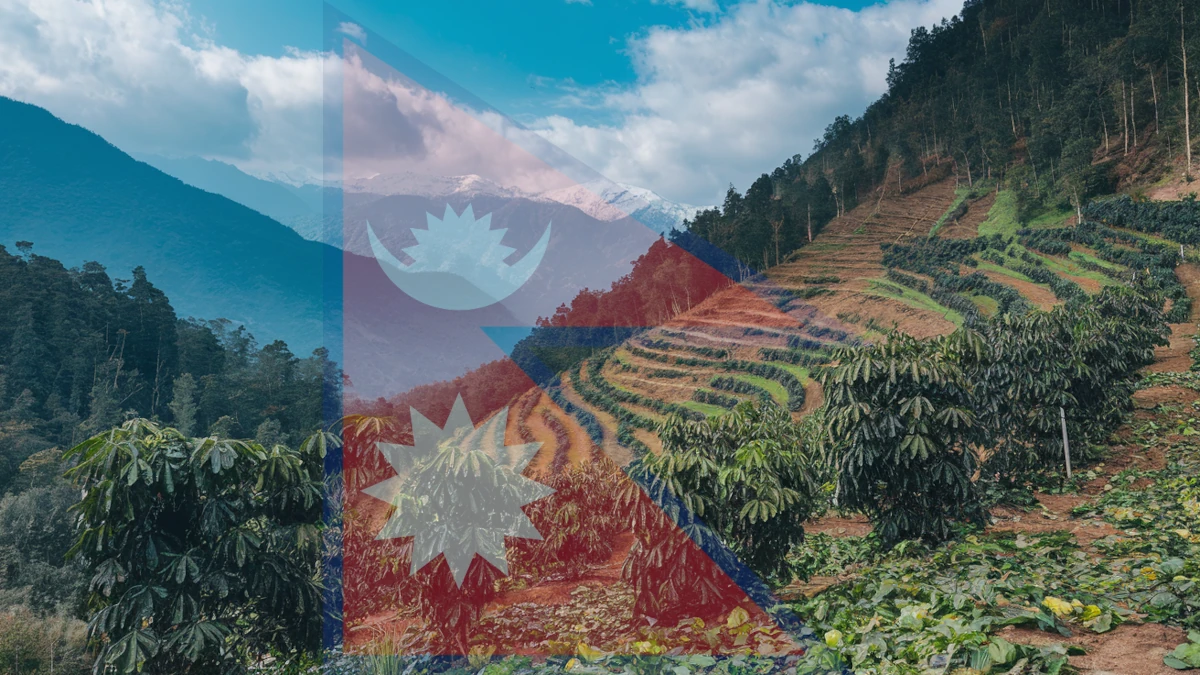Does coffee grow in Nepal? Yes! Coffee thrives in Nepal’s Himalayan foothills, offering a unique, high-quality product known as Nepal Coffee. Despite its modest production scale, Nepali coffee is gaining global recognition for its organic farming methods, distinct flavor profile, and specialty-grade quality.
This article explores the history, flavors, challenges, and opportunities of Nepalese coffee beans, shedding light on why it holds immense potential in the global specialty coffee market.
Table of Contents
The History of Nepal Coffee
The Origins of Coffee in Nepal
Coffee was introduced to Nepal in the late 1930s by Hira Giri, who brought seeds from Myanmar. Initially, farmers grew coffee for home consumption or local sales. However, the industry faced a major setback when coffee-leaf rust devastated crops, leading many farmers to switch to tea cultivation.
Revival in the 1970s
The industry began to revive in the late 1970s with the introduction of new seeds from India. By the 1990s, commercial production had started, and coffee farming expanded to 42 districts, providing livelihoods for approximately 32,500 households.
Institutional Support
In 1993, the National Tea and Coffee Development Board (NTCDB) was established to support the sector’s growth. The Nepal Coffee Producers Association (NCPA) followed in 1998, uniting farmers and businesses. Nepal’s first coffee export to Japan in 1994 marked its entry into the global market.
What Makes Nepali Coffee Unique?
High-Altitude and Organic Farming
Nepali coffee is grown in the Himalayan foothills at elevations of 800–1,600 meters. The high altitude, combined with organic and community-based farming practices, creates a unique flavor profile.
Flavor Profile
Nepali coffee is known for its notes of cedar, dried fruit, and citrus, making it a premium product. Its smooth, balanced taste has won the hearts of coffee enthusiasts worldwide.
Exotic Appeal
International consumers are drawn to the exotic origin of Nepali coffee and the stories of smallholder farmers practicing sustainable agriculture.
The Third-Wave Coffee Movement in Nepal
The rise of coffee culture in Nepal, especially among the youth, has fueled interest in artisan coffee. Young enthusiasts are experimenting with brewing techniques and creating innovative coffee-based drinks, elevating the local coffee scene.
Growth and Recognition of Nepal Coffee
Youth Engagement
Many young Nepalis are mastering coffee-making skills, with some gaining international recognition. For example, Dhan Tamang has won global barista competitions, putting Nepali coffee on the world map.
Economic Contribution
Coffee cultivation has expanded to 41 districts, covering 2,646 hectares and employing over 30,000 farmers. However, production remains limited, with only 586 metric tons produced annually (2024-2025).
Global Demand
The international demand for Nepali coffee is estimated at 8,000 metric tons, but Nepal is tapping only 1.3% of this potential. This highlights a significant gap between demand and supply.
Challenges Facing Nepal’s Coffee Industry
Land Ownership Restrictions
Nepali law limits private land ownership to 3.75 hectares per individual, hindering large-scale commercial farming. The lack of clear land leasing policies further complicates long-term investments.
Labor Shortages
Youth migration for foreign employment has left fertile lands unused, reducing the potential for expanding coffee cultivation.
Topographical and Climatic Challenges
The hilly terrain, ideal for coffee farming, limits mechanization and access to roads. Climate change and unpredictable weather further impact yields.
Organic Farming Constraints
The National Coffee Policy (2003) mandates organic practices, making coffee plants vulnerable to pests and diseases without chemical interventions.
Unethical Practices
Importing cheap coffee beans and selling them as Nepali coffee undermines the local industry’s reputation and pricing.
Weak Branding and Packaging
Poor branding, packaging, and positioning fail to highlight Nepali coffee as a high-end, luxury product.
Opportunities for Nepal Coffee
Focus on Specialty Coffee
Nepal should position its coffee as a high-end, luxury product, akin to “Panama Geisha” or “Jamaica Blue Mountain.” The unique selling point of being “grown in the Himalayan foothills” can be a powerful marketing tool.
Research and Development
Introducing disease-resistant, high-yielding Arabica varietals suited to Nepal’s climate is crucial. However, the introduction of Robusta beans should be avoided to maintain Nepal’s competitive edge in the specialty coffee market.
Community-Based Model
The existing community-based and sustainable farming practices provide a competitive advantage in the global specialty coffee industry.
Youth Involvement
Encouraging young people, especially women, to participate in the coffee value chain—from farming to barista training—can drive innovation and global representation.
Policy Reforms
Addressing land ownership and leasing regulations, improving infrastructure, and providing technical support to farmers are essential for scaling production.
Branding and Marketing
Strengthening branding, packaging, and positioning as a luxury product can enhance Nepal’s global presence in the coffee market.
Notable Coffee-Growing Regions in Nepal
- Gulmi: Birthplace of Nepali coffee; known for its floral, citrus, and fruity notes.
- Palpa: Offers a balanced flavor with hints of chocolate and nuts.
- Lalitpur: Exhibits bright acidity with notes of berries and floral aroma.
- Kavrepalanchok: Known for its complex flavor with hints of caramel and citrus.
- Syangja: Features a rich, full-bodied flavor with notes of dried fruit and spice.
- Lamjung: Known for its bright acidity, floral aroma, and tropical fruit notes.
- Other Regions: Nuwakot, Rupandehi, Dhading, Sindhupalchok, Kaski (Pokhara), and Gorkha.
Conclusion
Nepal Coffee is a unique, high-quality product with immense global potential. Despite challenges like land restrictions and labor shortages, strategic reforms and branding can elevate its position in the specialty coffee market. By focusing on sustainable practices, youth engagement, and luxury positioning, Nepal’s coffee industry can connect the world to the Himalayan foothills, offering a truly unique and memorable cup of coffee.
